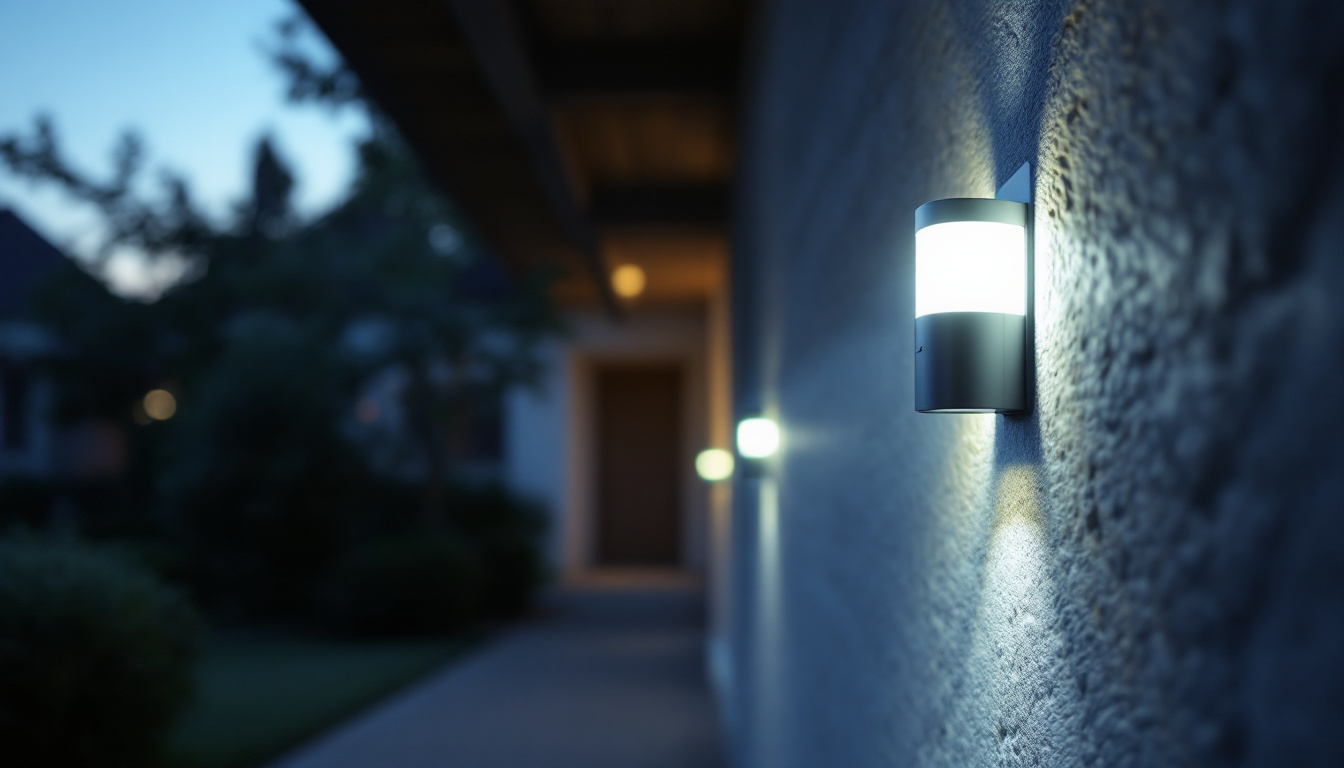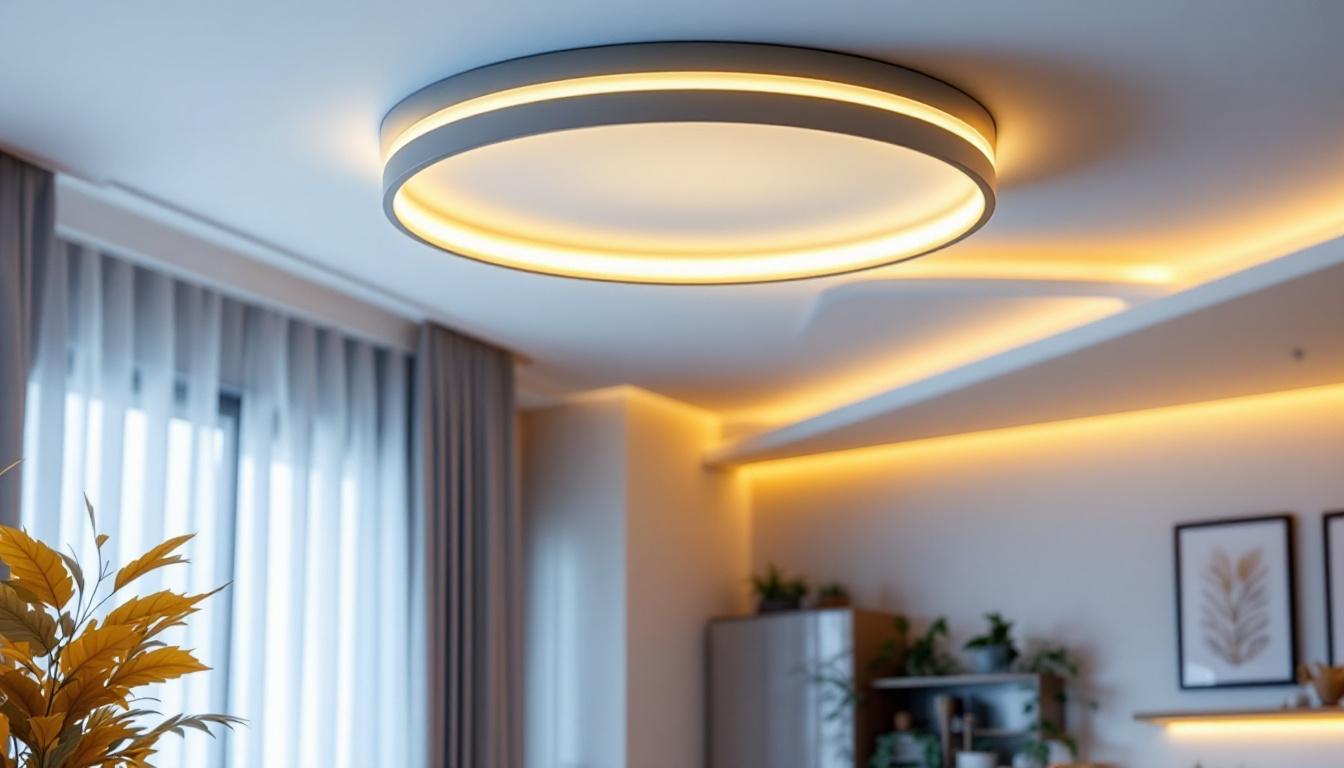
In the ever-evolving world of lighting technology, motion detecting lights have emerged as a popular choice for both residential and commercial applications. These innovative lighting solutions not only enhance security but also promote energy efficiency and convenience. For lighting contractors, understanding the intricacies of motion detecting lights is essential for delivering optimal solutions to clients. This article delves into the various aspects of motion detecting lights, from their functionality to installation considerations, ensuring that contractors are well-equipped to meet the demands of this growing market.
Motion detecting lights utilize advanced technology to sense movement within a designated area. This capability is primarily achieved through various types of sensors, each designed to cater to different environments and needs. Understanding how these sensors work is crucial for contractors aiming to provide tailored solutions. The integration of motion detection technology not only enhances security but also promotes energy efficiency by ensuring that lights are only activated when necessary, thus reducing unnecessary energy consumption.
There are several types of motion sensors commonly used in lighting applications, including passive infrared (PIR), microwave, and dual-technology sensors. Each type has its unique features and is suited for specific scenarios. Additionally, the choice of sensor can significantly impact the overall effectiveness of a lighting system, making it essential for contractors to assess the specific requirements of a project before making a selection.
Motion sensors operate by monitoring changes in their environment. For instance, PIR sensors measure the heat emitted by objects, triggering the light when a warm body moves within their range. Microwave sensors send out microwave signals and detect changes in the reflected signals when an object moves. Understanding the operational principles of these sensors helps contractors choose the right technology for specific applications. Furthermore, the installation location and angle of the sensors can greatly influence their effectiveness; for example, placing a PIR sensor too low may result in missed detections, while positioning it at an optimal height can maximize its range and sensitivity.
In addition to their basic functionality, many modern motion sensors come equipped with advanced features such as adjustable sensitivity settings and timers, allowing users to customize their performance based on specific needs. Some sensors can even integrate with smart home systems, enabling remote control and monitoring through mobile applications. This level of sophistication not only enhances user convenience but also provides valuable data analytics, helping contractors and homeowners understand patterns of movement and optimize energy usage further. As technology continues to evolve, the capabilities of motion detection systems are expected to expand, offering even more innovative solutions for security and energy management.
Motion detecting lights have a wide range of applications, making them a versatile choice for contractors. From enhancing security to improving energy efficiency, these lights serve various purposes across different settings.
In residential settings, motion detecting lights can significantly enhance security. Homeowners often install these lights around entry points, driveways, and backyards to deter intruders. Additionally, they provide convenience by illuminating pathways when residents approach their homes, reducing the risk of accidents.
For commercial properties, motion detecting lights are invaluable for both security and operational efficiency. Retail stores, warehouses, and office buildings benefit from automated lighting systems that activate when movement is detected. This not only improves safety but also helps in conserving energy by ensuring lights are only on when needed.
Outdoor spaces, such as gardens and patios, can also benefit from motion detecting lights. These lights can be strategically placed to highlight landscaping features while providing safety for homeowners and guests. By integrating motion sensors, contractors can create dynamic lighting solutions that adapt to the environment.
Proper installation of motion detecting lights is crucial for optimal performance. Contractors must consider various factors to ensure that the lights function as intended and meet the specific needs of the client.
When installing motion detecting lights, the location is paramount. Contractors should assess the area to determine the best placement for sensors, ensuring they cover the intended space effectively. Factors such as the height of installation, angle of detection, and potential obstructions should be carefully evaluated.
Motion detecting lights can be powered through hardwired connections or battery-operated systems. Contractors must consider the power supply options available and ensure that wiring is done safely and in compliance with local regulations. For battery-operated lights, it is essential to inform clients about maintenance requirements, such as battery replacement.
Many motion detecting lights come with adjustable settings, allowing users to customize sensitivity, duration, and light levels. Contractors should familiarize themselves with these settings and provide guidance to clients on how to optimize their lighting systems for different scenarios.
The advantages of motion detecting lights extend beyond mere convenience. They offer a range of benefits that appeal to both contractors and clients alike.
One of the primary benefits of motion detecting lights is the enhanced security they provide. By illuminating areas when movement is detected, these lights can deter potential intruders and provide peace of mind for homeowners and business owners. The presence of lighting can significantly reduce the likelihood of criminal activity.
Motion detecting lights contribute to energy efficiency by ensuring that lights are only activated when needed. This not only helps in reducing electricity costs but also extends the lifespan of the lighting fixtures. For environmentally conscious clients, this aspect is particularly appealing.
For many users, the convenience of motion detecting lights cannot be overstated. These lights automatically turn on when someone approaches, eliminating the need for manual switches. This feature is especially beneficial for individuals with mobility challenges, enhancing accessibility around homes and commercial spaces.
While motion detecting lights offer numerous benefits, there are challenges and considerations that contractors must address to ensure successful implementation.
One of the common issues with motion detecting lights is the potential for false alarms. Factors such as pets, wildlife, or environmental conditions can trigger the sensors unnecessarily. Contractors should educate clients on the importance of choosing the right sensor type and adjusting sensitivity settings to minimize these occurrences.
Environmental factors, such as extreme weather conditions, can affect the performance of motion detecting lights. Contractors should recommend products designed to withstand specific environmental challenges, ensuring longevity and reliability. For outdoor installations, weather-resistant fixtures are essential.
As smart home technology continues to gain popularity, integrating motion detecting lights with smart systems can enhance functionality. Contractors should stay informed about the latest smart technology trends and offer solutions that allow clients to control their lighting remotely or through automation.
To excel in the installation and maintenance of motion detecting lights, contractors should adhere to best practices that ensure quality service and client satisfaction.
The lighting industry is constantly evolving, with new technologies and products emerging regularly. Contractors should invest time in staying informed about the latest trends, including advancements in motion detection technology, energy-efficient solutions, and smart lighting systems. This knowledge will empower them to provide informed recommendations to clients.
During consultations, contractors should take the time to understand the specific needs and preferences of their clients. By conducting thorough assessments of the spaces where motion detecting lights will be installed, contractors can offer tailored solutions that meet both functional and aesthetic requirements.
Post-installation support is crucial for ensuring the long-term satisfaction of clients. Contractors should offer maintenance services, including regular checks on the functionality of motion detecting lights and guidance on adjusting settings as needed. This proactive approach fosters client trust and encourages repeat business.
Motion detecting lights represent a significant advancement in lighting technology, offering enhanced security, energy efficiency, and convenience. For lighting contractors, understanding the various aspects of these systems—from sensor types to installation considerations—is essential for delivering effective solutions to clients. By staying informed about industry trends and adhering to best practices, contractors can position themselves as trusted experts in the field, ready to meet the growing demand for motion detecting lighting solutions.
As the market for motion detecting lights continues to expand, contractors who embrace this technology will not only enhance their service offerings but also contribute to a safer and more efficient environment for their clients.
Ready to elevate your lighting projects with the latest in motion detecting technology? Look no further than LumenWholesale for all your lighting needs. We provide contractors with high-quality, specification-grade lighting products at unbeatable wholesale prices, ensuring you have access to the best in the market without the extra costs. Our extensive selection is designed to meet the highest industry standards, so you can trust in the performance and reliability of every light you install. Plus, with the convenience of free shipping on bulk orders, you can stock up on premium lighting solutions without worrying about hidden fees. Don’t compromise on quality or value—choose LumenWholesale for the perfect blend of affordability and convenience. Wholesale Lighting at the Best Value is just a click away.

Explore the innovative world of ceiling light trim and discover how it’s revolutionizing lighting design and installation.

Explore the pros and cons of dim switches versus alternative lighting solutions in this comprehensive guide for lighting contractors.

Discover how 4Ft T8 LED lights can revolutionize your lighting projects and give you a competitive edge.

Discover the benefits of garage track lighting and how it can transform your space into an energy-efficient haven.